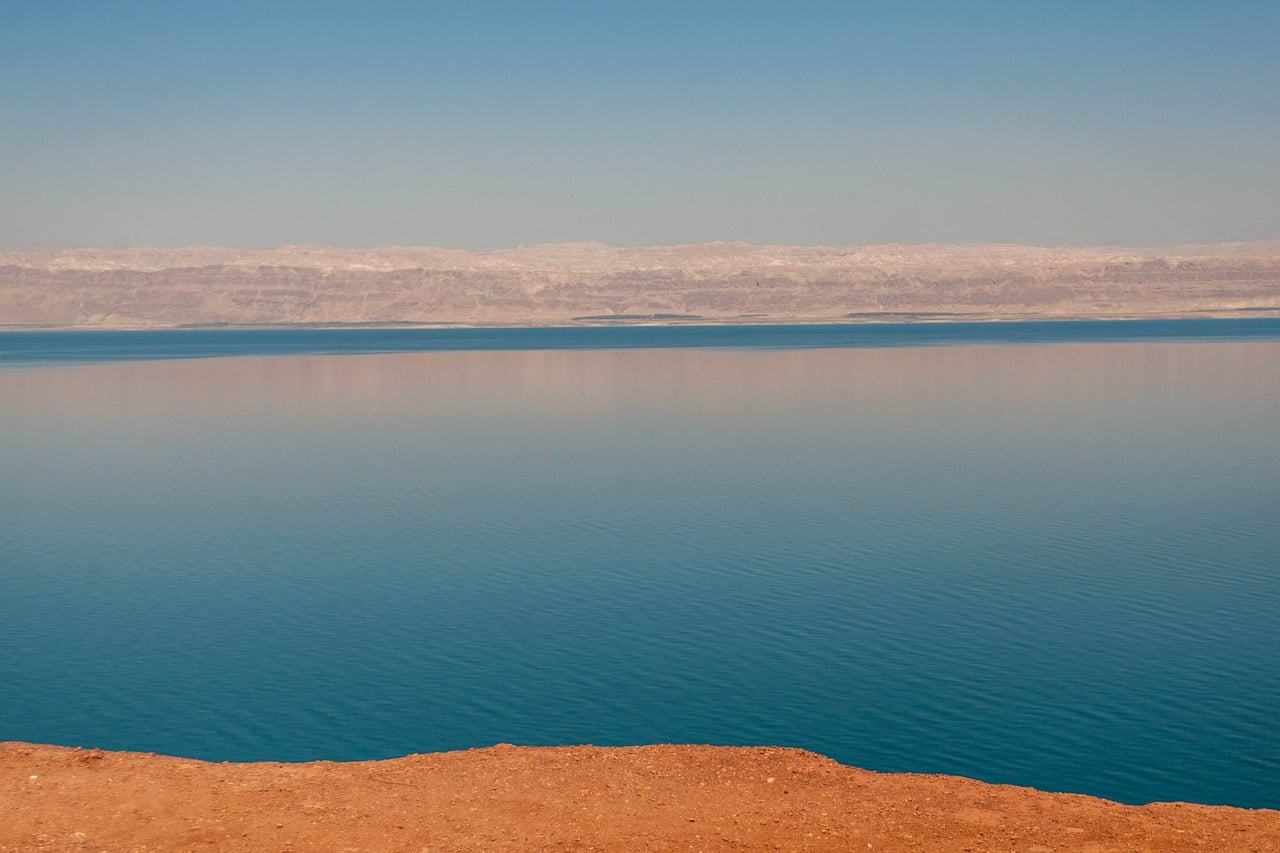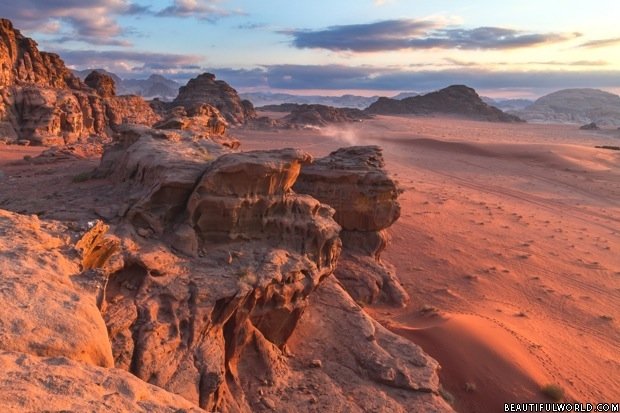The Dead Sea is a large (605 km²) salt lake on the border of Israel, Jordan and the West Bank. It is 10 times saltier than the open ocean and this gives the water a high density so floating is easier however it can not support animal or plant life.
Where is the Dea Sea?
The Dead Sea is in the Middle Easts Jordan Rift Valley. It lies on the border of Jorda, the West Bank and Israel.

Dead Sea Facts
The Dead Sea is actually 430.5m below sea level and it is the lowest place on Earth. The air around it is dry with low atmospheric pressure and the dry conditi0ns mean humidity is low and there are few allergens.
It is 50km long and at its widest point, it is 15km wide. It is formed from waters of the Jordan River and a few springs on its edge that also creat quicksand pits!
Dead Sea Salinity
Because water continually flows into the lake and then evaporates, leaving the minerals dissolved in it behind, over time the salinity of the lake increases. Now it is 10 times saltier than the open ocean. This level of salinity means plants and animals can not survive in the water. It also gives the water a higher density which means it is much easier to float in.

The Dead Sea has been an attraction for thousands of years as bathing in the salty waters were thought to be healthy. People still bath in the lake and its mud today for the same reasons. The low atmospheric pressure and lack of allergens are also probably additional reasons why this are is thought to be health restoring. There does seem to be evidence that the area provides relief for several respiratory and skin conditions.
Is The Dead Sea Disappearing?
Since 1930 the surface area of the Dead Sea has fallen by 42%. This is mainly due to human activity diverting water from the Jordan River. If this continues the Dead Sea will rapidly dry out completely which would be an ecological and economic disaster for the area.
The falling level of the lake has created a range of problems for the area such as large sinkholes. There are however some engineering projects which may protect the lake from disappearing entirely.
In 2009 Jordan announced the Jordan National Red Sea Development Project” (JRSP) which aimed to take seawater and desalinate it for human use. The salty wastewater from this process would be diverted to the Dead Sea which will help protect it from shrinking any further.
In 2016 the selection for the company that would construct a pipeline from theRed Sea to the Dead Sea began. This Jordanian lead project is expected to be completed in 2021.
Visiting The Dead Sea
Jordan and Israel have well-developed tourist industries on the shores of the lakes. There are plenty of hotels to choose from which will allow you to enjoy bathing in the lake and trying some of the salt and mud treatments.
Sadly for the West Bank, they have not been able to develop their shores to generate much-needed revenue due a failure to acquire planning permission. Israel has also denied them the permissions to extract elements from the area – activities which generate millions of revenue for the Israeli and Jordanian economies.

Things To Do Around The Dead Sea
On the North West edge of the lake you can visit the lowest Oasis on earth, Einot Tzukim. Ein Gedi is an Israeli Nature reserve on the edge of the lake at Israels most Northerly border. There is an Oasis and an area of impressive canyons. 20km South of this is the UNESCO site, Masada. It is an ancient fortress which you can hike to (or use the cable car!). Further South again is Mount Sodom which is 80% saltwater erosion has created some spectacular caves.


